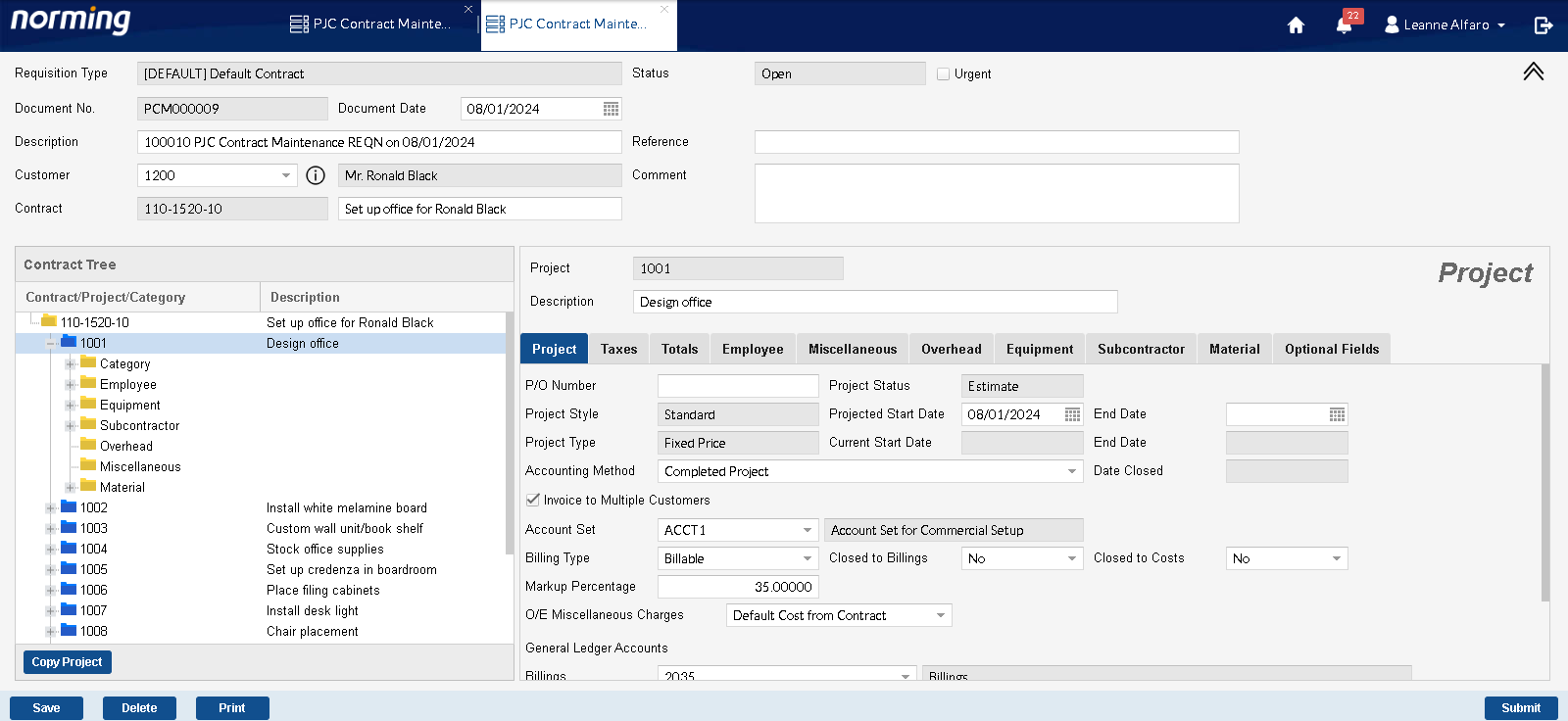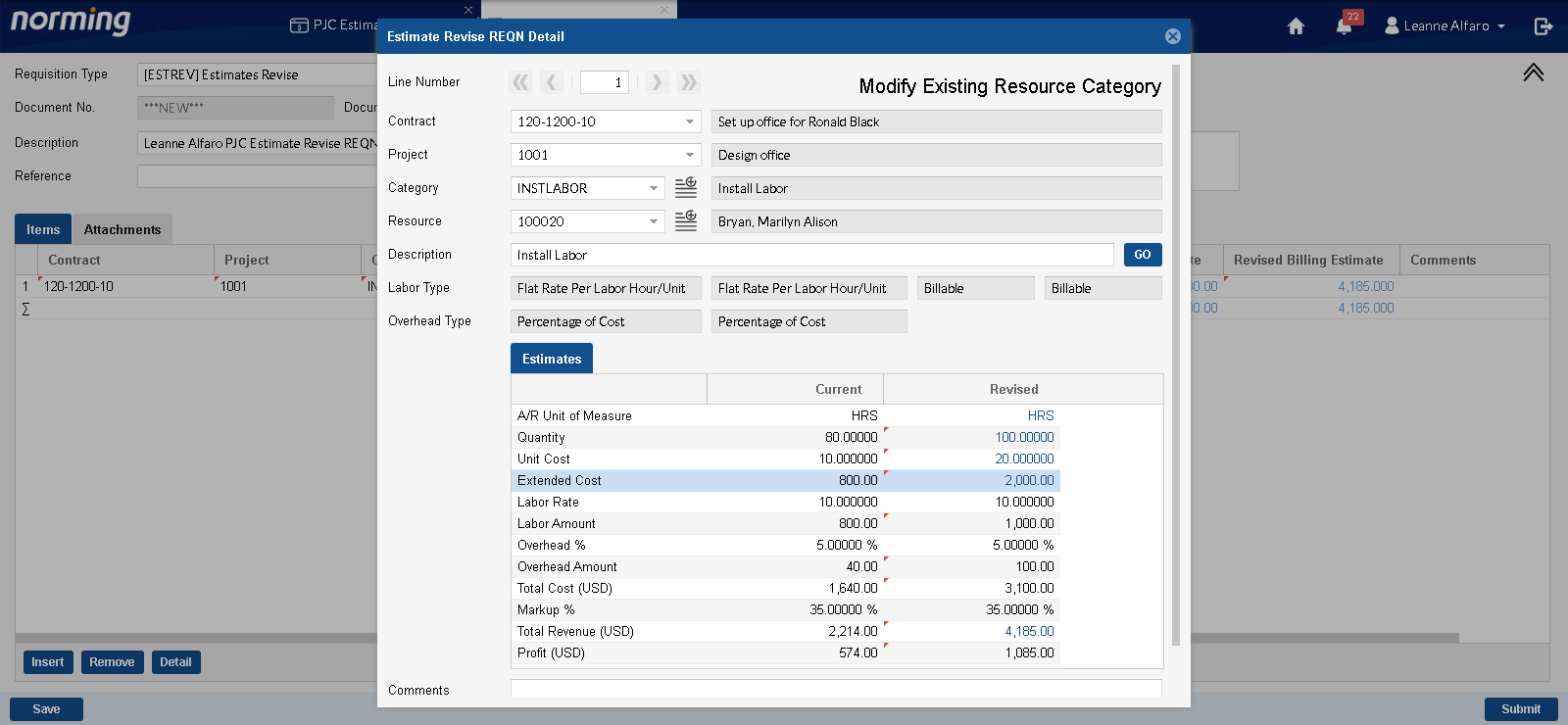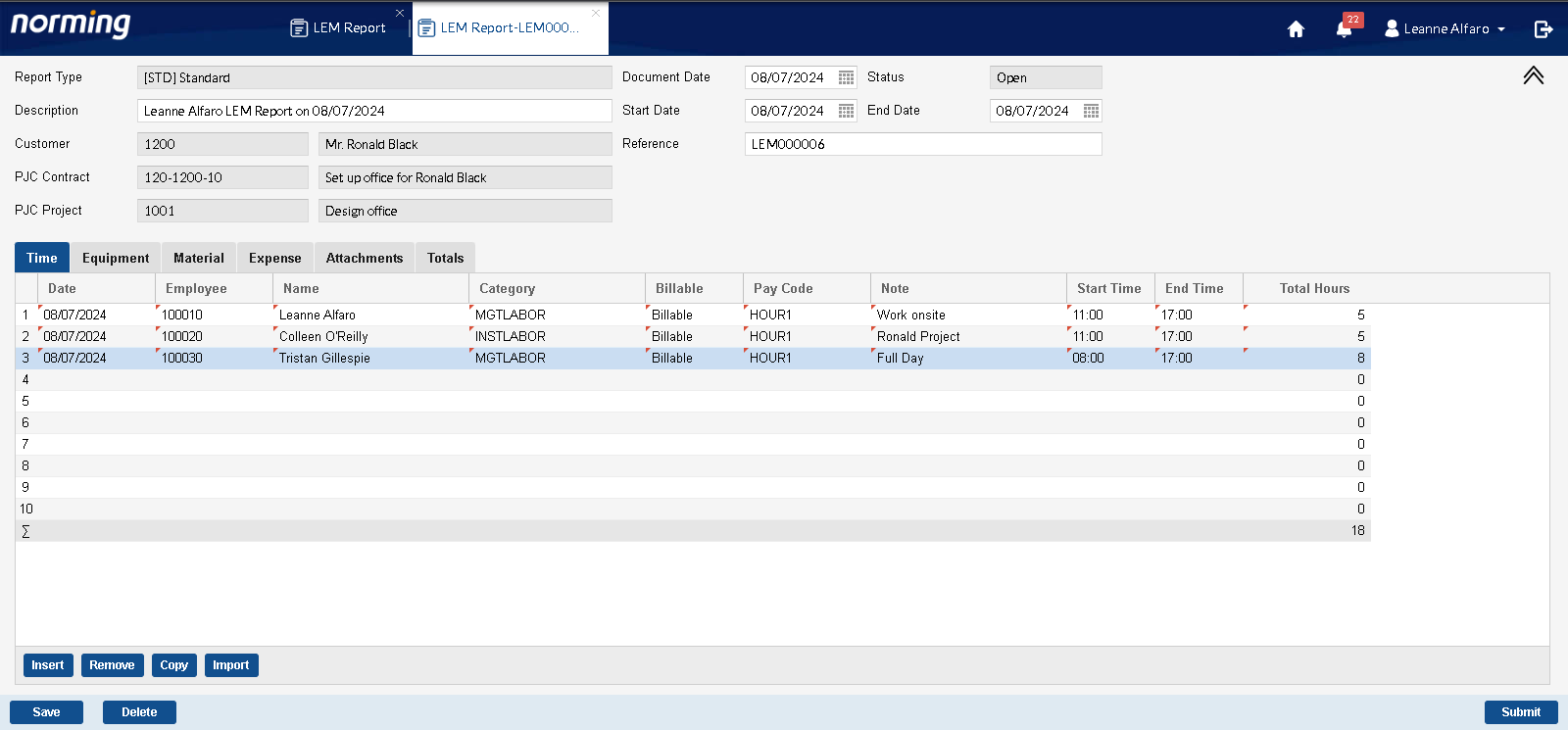Solution Overview
Norming Project Management fully integrates with the Sage 300 Project and Job Costing (PJC) module. It can provide further approval workflow automation for businesses managing project-based work, such as construction companies, engineering firms, and service-oriented industries. It allows users to track and manage the following aspects of a project:
Modules
Contract Maintenance Request
The application allows user to create and approve new contracts and projects with detailed billing & costs attributes and enables detailed cost management, resource allocation via the web portal. After the request been approved, the contract will be generated automatically in Sage 300 PJC module.

This feature allows users to define key aspects of each project, such as phases, categories, you can create new projects with detailed attributes, such project number/name, customer information, project types, start &end dates
Project Number/Name: A unique identifier and name to the project.
Customer Information: Link the project to a customer or client, ensuring billing and accounts receivable integration.
Start and End Dates: Set the planned start and completion dates for the project.
Phases and Categories: Allows to define a hierarchy of project levels and transaction types to track and report costs and profits for any size project. Manage contracts or jobs to three levels—contract (job), project (phase), and category, projects can be broken down into phases (e.g., foundation, framing) and categories (e.g., labor, materials) for more granular control.
Billing Methods: Depending on the project type, you can choose from different billing methods:
> Time and Materials: Clients are billed based on actual labor hours and material costs.
> Fixed Price: A predetermined amount is billed regardless of actual costs incurred.
> Cost-Plus: A percentage or markup is added to the actual costs to determine billing amounts.
Project Estimates Revise
Revising a job estimate is a common process in industries like construction, engineering, manufacturing, and any project-based business where costs need to be closely monitored and adjusted as a project progresses. The need to revise an estimate can arise due to changes in scope, unforeseen conditions, labor or material cost fluctuations, or client-driven modifications.

Norming Project Estimates Revise Request ensures that any revisions to the project’s estimates is reflected in the contract.
The request can be reviewed by the project managers with the original job estimate before making revisions and compare what was initially planned versus what has changed. It includes:
Labor Costs: Check original labor hours and rates for workers, and assess how the change impacts the overall estimate.
Material Costs: Compare current material prices or quantities with the original estimate.
Equipment Costs: Determine if equipment usage has increased or if additional machinery is required due to the change.
Subcontractor Costs: Ensure that subcontractor agreements reflect any new tasks or changes in scope.
LEM Report
LEM stands for Labor, Equipment, and Materials. It is a term used in project management to track and manage the key resources involved in construction projects. Construction companies often use LEM reports or LEM sheets to record daily or weekly labor hours, equipment usage, and material consumption, allowing for better cost tracking, accountability, and project forecasting.

Norming LEM report allows the project manager to approve and track the various of costs of a project in a single request:
1. Labor:
This includes the time spent by workers on site. Construction companies track labor hours to calculate wages, monitor worker productivity, and assess whether the project is progressing according to schedule. Labor reporting may include specific details like job classification (e.g., carpenter, electrician) and overtime hours.
2. Equipment:
This refers to the construction machinery and tools used on-site, such as cranes, bulldozers, excavators, or smaller tools like drills and saws. The company tracks how long the equipment is used (often on an hourly or daily basis) and ensures it is operating efficiently. This helps allocate costs for equipment rental, depreciation, or maintenance.
3. Materials:
Materials include all the physical supplies used in construction, like concrete, steel, wood, nails, and more. Accurate material tracking is essential to ensure that enough supplies are on hand to complete the job without costly delays, while also preventing material waste.
Benefits of LEM Tracking for Construction Companies:
Cost Control: LEM tracking helps construction companies keep a detailed record of all labor, equipment, and material costs, which is critical for staying within budget.
Project Forecasting: By comparing actual LEM data against estimates, project managers can make adjustments to the project plan in real-time to avoid overruns or delays.
Billing and Invoicing: For projects that use time-and-material billing, LEM sheets provide the documentation needed to bill clients accurately and transparently.
Norming LEM report is a crucial tool for construction companies to manage the core resources of labor, equipment, and materials. With the integration with Sage 300, timecards, material usage and equipment usage can be generated in to PJC automatically, this ensures projects run more smoothly.

